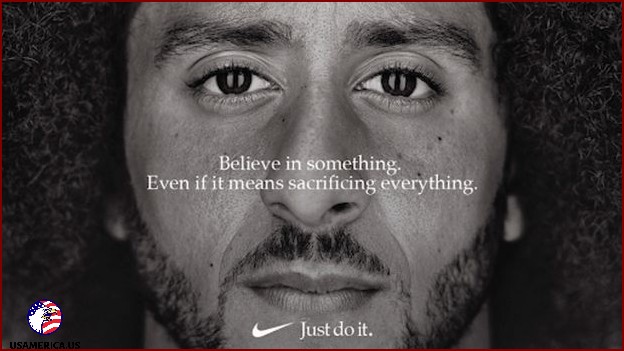Cause Marketing: What It Is, Examples, and How to Get Involved
Today I want to talk to you about a neat concept called cause marketing. Have you ever wondered what it is or how it works? Well, I’m here to break it down for you in simpler terms and show you how you can get involved!
So, what exactly is cause marketing? It’s when companies team up with a charitable cause or organization to make a positive difference. They join forces to create campaigns, promote products, or run events that raise awareness and support for important social issues. It’s like a win-win situation for both the company and the cause!
Let’s dive into some examples to get a better understanding. Imagine your favorite ice cream brand partners with a wildlife conservation organization. They decide to donate a portion of their ice cream sales to help protect endangered animals’ habitats. So every time you buy a scoop of their delicious ice cream, you’re also contributing to the cause. How cool is that?
Now, you might be wondering how you can get involved in cause marketing. Well, there are a few ways you can do it! Firstly, you can support the companies that are actively participating in cause marketing initiatives. Look for products or services that specifically mention their commitment to a cause or display logos of partnered organizations. By choosing these companies, you’re showing your support and helping make a difference.
Secondly, you can spread the word! Use your voice and social media platforms to share information about cause marketing campaigns or events. Tell your friends, family, and followers why you believe in those causes and encourage them to get involved too. Remember, the more people that know about it, the bigger impact we can make together!
Lastly, don’t forget that you can also directly donate to the causes that inspire you. Many organizations rely on donations to fund their important work, so any contribution, big or small, can make a meaningful impact. Whether it’s donating money, volunteering your time, or raising awareness, every act of support counts!
So, there you have it – cause marketing in a nutshell. It’s a powerful way for companies and individuals to come together and make a positive change in our world. By choosing to support cause marketing initiatives, spreading the word, and donating to causes, you can be an active participant in creating a better future for everyone. Let’s all do our part and make a difference!

Have you ever thought about supporting a cause in your business? Maybe a charity or a social issue? It’s kind of like getting some marketing visibility while also doing something good. Big brands these days are really into this thing called cause-related marketing. They’re taking a stand on societal issues more than ever before.
Small businesses have been around forever and they’ve always been a big part of local communities. They often give a lot of support, even if they don’t call it marketing. But let’s be real, it definitely helps their brand awareness.
They might not be doing it to promote themselves, but the good things they do really make a difference. People in the community notice and it makes the business look good in their eyes.
I want to talk to you about something really cool called cause marketing in small businesses. It’s all about how a business can do something good for a cause and benefit from it at the same time. Let’s dive in and also look at some examples, how to make them even better with ads or PR, and how to create your own cause-related campaign. And guess what? I’ll be sharing some expert tips with you along the way!

Contents
Let’s Talk About Cause Marketing
- Imagine a charitable event, like a 10K run, that aims to raise money to fight cancer. Or think about businesses making donations to food banks or supporting other non-profit organizations and charities.
- And then there’s the idea of businesses taking a stand and supporting social issues like sustainability through fundraising campaigns.
Companies that do cause marketing believe it helps them gain and keep customers like you and me.
The Power of Belief-Driven Consumers
In recent years, corporate social responsibility has become really important because many people, just like you, make purchase decisions based on their own beliefs.
According to the 2018 Earned Brand Study by Edelman, one out of every two consumers are driven by their beliefs when making buying choices. In fact, Edelman describes it as the new normal.
When you go online to shop or use social media, you have so many options for where to spend your money. It’s really amazing! But did you know that some people, like me, choose to support businesses that share the same beliefs and values as us?
This is what we call being a belief driven consumer. We make a conscious decision to buy from companies that have similar beliefs and commitments to what we hold dear.
It’s really interesting to see how things have changed over time. In the past, big companies would avoid taking a stand on social issues. They didn’t want to get involved in any controversy. But now, CEOs of these companies are speaking up and publicly showing their positions on social issues.
In fact, some companies are making social causes a central part of their advertising campaigns. They truly believe in these causes and want to make a difference.

The Benefits of Cause Marketing
As a small business, it’s important for me to let the world or local community know how I am making a positive impact, I believe, says Saru Saadeh, co-founder and CEO of AdRobin.
- Cause marketing helps the world. I can’t stress this enough – supporting a cause helps make the world a better place. To truly make a difference, it’s crucial to genuinely believe in and support the cause you stand for. Always keep that in mind when engaging in cause marketing activities, Saadeh suggests.
- It gives purpose to your marketing. Cause marketing gives me the opportunity to have meaningful conversations with my target audience. It allows me to create a unique message that brings together all of my advertising and PR efforts. Plus, it helps my business stand out from competitors, I understand, Saadeh affirms.
- It can be affordable. Costs can vary, especially if you choose to include advertising in your cause marketing strategy. However, in general, basic forms of cause marketing are not expensive. Small businesses can engage in cause marketing initiatives without spending much, if any, money. For instance, a local grocery store may ask customers if they would like to donate to a local charity partner. Without needing fancy technology, the store can collect donations and send them to the nonprofit organization they support, Saadeh explains.
Saadeh speaks from experience, as he and his company are actively involved in their own charitable endeavor, the Aspire to Be Foundation. We actually created a small cause-based program ourselves. It cost us around $850 per month for a short period of time, but it was definitely worth every penny.
But I’ve seen other small and medium businesses spend over $5,000 a month on cause marketing. It all depends on the business, the cause, and the size of the initiative.
Using PR and Advertising to Get the Best Results
You can make a bigger impact on your marketing by combining cause marketing with a public relations campaign, an advertising campaign, or even both. That’s what Saadeh says.
Successfully positioning a brand as associated with a cause takes a lot of hard work. That’s why cause marketing is usually followed by public relations efforts that focus on communicating about the cause and its achievements, he explains.
A cause that comes with a PR campaign can attract media attention. In other words, the news media might want to talk about your cause and your business. This can give you even more visibility and earn you more goodwill.
Advertising is a powerful tool that helps make the cause grow and boosts your marketing campaign. When I advertise, I can spread the word about my cause and get more people involved. It’s like an engine that drives positive change and helps me communicate my message.
Of course, advertising and public relations can be expensive, often costing more than the basic expenses of cause marketing. I need to invest some resources upfront in PR and advertising.
Let’s imagine a scenario where a grocery store accepts donations from customers. If the store decides to match the donations and promote its participation in the fundraiser, that’s when marketing expenses start to rise.
But these downsides can be counteracted by an increase in sales, I say, adding that you can measure the impact on sales by comparing them before and after the launch of an ad campaign.
Cause marketing alone takes some time to make a difference. However, advertising usually generates quick results and you can measure its impact more easily.
Some Examples of Cause Marketing
Nike, a big brand, serves as a perfect example of various marketing campaigns promoting a cause. For instance, they have run ads highlighting their support for women in sports.
And who hasn’t heard about Nike’s campaign featuring former NFL player Colin Kaepernick? The ad simply says: Believe in something. Even if it means sacrificing everything.

Let me tell you about something really cool I’ve noticed. Did you know that some big companies are showing their support for LGBTQ rights? It’s true! The Human Rights Organization even created a ranking called the Corporate Equality Index to showcase which companies are backing this cause. It’s pretty impressive.
And you know what? These companies are not just talking the talk, they’re walking the walk too. They’ve come up with some pretty awesome marketing campaigns to show their support. It’s like they’re saying, Hey world, we’re here for LGBTQ rights!
One company that’s doing an amazing job is Dove. They’ve created this really cool campaign called #ShowUs, all about promoting body positivity. It’s such an important message, and Dove is using their platform to spread it far and wide.
Check out this image. It captures the whole essence of what Dove is all about with this campaign. Pretty powerful stuff, right?

Do you think causes like these are too expensive for your budget? Or perhaps they aren’t exactly what you had in mind? Well, let me offer you two examples of cause marketing for small businesses:
- One idea is to create a cause where your donations will be matched. This not only gets your customers involved, but also gives you the opportunity to launch an advertising campaign and gain some good public relations.
- Another example could be showing your public support for human rights on your website and social media platforms. This can serve as the focal point for an advertising or public relations campaign. This strategy works especially well for businesses in the software or consulting industry that struggle to get attention and recognition. It’s a fantastic story to pitch to the media and create a buzz about your business.
How to Run a Cause Marketing Campaign
So, you’re convinced. Now, how do you get started with cause marketing? It’s simple:
1. Choose a Cause
When trying to find the right cause to support, the first step is to identify something that is important to you. It should be an issue or project that you care deeply about and feel passionate about.
While it’s nice to have marketing benefits, the main reason for supporting a cause should be the personal satisfaction it brings. It’s about the joy and fulfillment that comes from making a difference.
If you need help choosing a cause, you can look at examples of cause marketing that have been successful in the past. They can serve as inspiration and guidance.
If you’re looking for more ideas, you can visit DoSomething.org. They have listed 24 different types of causes that you can support. Some examples include animal welfare, promoting body positivity, combating bullying, providing relief after disasters, helping people who are homeless, promoting mental and physical health, supporting STEM education, protecting the environment, and fighting for women’s rights.
Avoid the pitfalls, my friend. It’s important for a small business to be careful when choosing a cause. If they pick something that is too divisive or political, it can blow up in their faces. They might end up with boycotts, unhappy customers, and even financial losses. This is what author John Ringo called get woke, go broke.
2. Budget for Cause Marketing
Let’s talk about money, my friend. Financial planning is key here. You need to set aside some money every month to support your chosen cause. Even if times are tough and money is tight, don’t lose hope.
There’s always another way. You can choose a cause where your customers can also contribute. This will turn your business into a place where people can come together and do good. It’s a win-win situation for you and your customers. Plus, it makes it easier for them to make a difference.
Let me tell you about a cool way to make a donation campaign that won’t break the bank. It’s called a donation matching campaign, where my company offers to match donations up to a certain amount or percentage. How awesome is that?
- Dedicate a Percentage of Sales: We can set aside a fixed percentage of our sales or profits to go towards a good cause. Every time someone buys our products or services, they are also contributing to making a difference.
- Budget for Collaborative Efforts: We can reserve some money specifically for teaming up with non-profits or other businesses. By working together, we can amplify our impact and help even more people.
- Plan for Marketing Expenditure: Let’s make sure we include cause marketing in our overall marketing budget. This way, we can promote our good deeds and attract more customers who care about making a positive change along with us.
- Set Realistic Goals: It’s important to establish a budget that makes sense for our business size and revenue. We want to make a meaningful contribution while also being responsible and sustainable.
- Flexibility for Opportunities: We should keep some flexibility in the budget to seize unexpected chances that align with our cause. Sometimes, amazing opportunities come up that we just can’t miss!
3. Factor in PR and Advertising
If you want to get the most out of your cause marketing, you can boost it even further by using ads or PR efforts to catch the attention of the media. Don’t forget to consider the expenses for PR and ads.
It’s also important to create a plan for any related PR or advertising campaigns. Write down what you’ll do, when you’ll start, where you’ll do it, and how much it will cost.
Be specific about the details of your campaign, like the messages and graphics. If you’re not confident in your own abilities, don’t hesitate to seek help from an agency to ensure a job well done.

Step 4: Keep Track of Your Campaign’s Success
When it comes to any kind of marketing, it’s important to have a way of measuring how effective your efforts are. Before you start your campaign to support a cause, it’s crucial to set clear goals that you can track.
These goals could include things like tracking how many sales you make, seeing how many new customers you attract, or even just making sure that your existing customer base stays the same size.
Once you’ve set these goals, it’s important to regularly check in and see how your campaign is doing. This way, you can make adjustments to your strategies and make sure that your campaign isn’t just well-intentioned, but actually delivers results.
One thing to keep in mind, according to Saadeh, is that you shouldn’t raise prices when you start cause-related marketing. Just because you’re doing something good doesn’t mean customers will want to pay more. Instead, focus on measuring the increase in social and digital awareness, overall sales volume, or your lead growth and retention rates.
Cause marketing is about making customers choose you, not about how much they’re willing to pay.
You can also use traditional PR or advertising metrics to measure the success of your cause marketing efforts. If you’re running digital ads, you can measure impressions, click-through rates, and conversion rates. If you’re doing PR campaigns, look at the number of interviews and articles written about your company or cause.
5. Get Your Employees Involved
You know, donating money to a cause is great and all, but you know what’s even better? When the people who work for a company get involved too.
So, I think it’s important to create an environment where employees feel inspired to give more than just their money. I’m talking about their time, their skills, and their passion.
There are a lot of ways to make this happen. You could organize events or provide opportunities for employees to go out into the community and help. Even just having brainstorming sessions where they can share their ideas can make a big difference.
But here’s the thing, you gotta keep the lines of communication open. Regularly update them on how the campaign is going and what the team has achieved. It’ll motivate them and make them feel more connected to the cause.
Oh, and don’t forget to give them a platform where they can voice their suggestions. You want them to feel like they’re a part of it all, right?

6. Making the Cause Last: A Legacy, Not Just a Campaign
When I think about running a campaign versus building a legacy, I realize there’s a profound difference. DoSomething.org understands this distinction, as they place emphasis on the cause itself rather than just the campaign.
Campaigns have a clear beginning and end, but your commitment to a cause should be everlasting, echoing the core values and beliefs of your brand.
- Commit for the Long-Term: It’s important to ensure that your brand’s commitment to the cause is enduring, not just a one-time effort.
- Integrate the Cause with Your Brand: Weave the cause into the very fabric of your brand’s core values and messaging.
- Stay Engaged: Keep the cause alive in your everyday business operations and interactions with customers.
- Continual Support Initiatives: Develop ongoing programs or events that support the cause, demonstrating your ongoing dedication.
- Get Your Employees Involved: Let’s make sure all of us are engaged with the cause on a regular basis.
7. Let’s Celebrate Our Successes
The journey of cause marketing is like a treasure hunt, with every milestone we achieve bringing us closer to making a difference. So when we reach these milestones, let’s take a moment to celebrate.
Acknowledging our progress boosts our spirits and keeps everyone motivated. But let’s not stop there. We should keep the conversation going about the importance of the cause, reminding ourselves and others about our brand’s unwavering commitment. Let’s share our future goals, plans, and how we plan to keep advancing the cause, making sure everyone feels like they’re a part of this vision.
When it’s all said and done, always remember that doing good is the right thing to do for our society. And not only that, it also brings you a sense of fulfillment. You and your team will experience personal satisfaction by being a part of something greater than your company. That feeling is invaluable, Saadeh adds.
Figuring out cause marketing can be complex. So let me break it down for you with a comparison between traditional marketing and cause marketing. This will help you understand the main differences and features of each.
